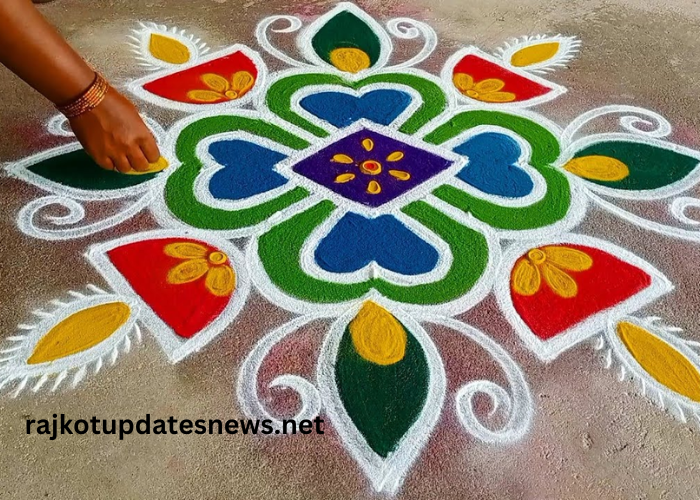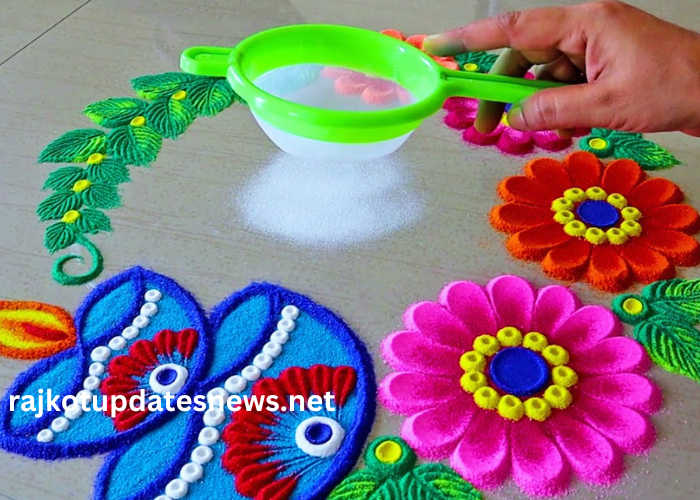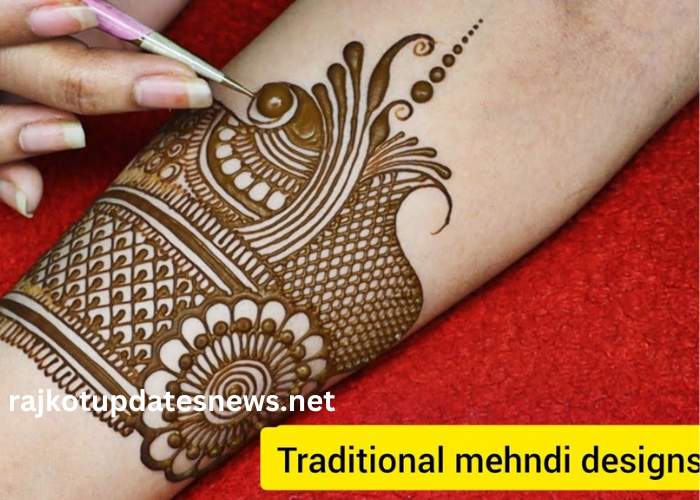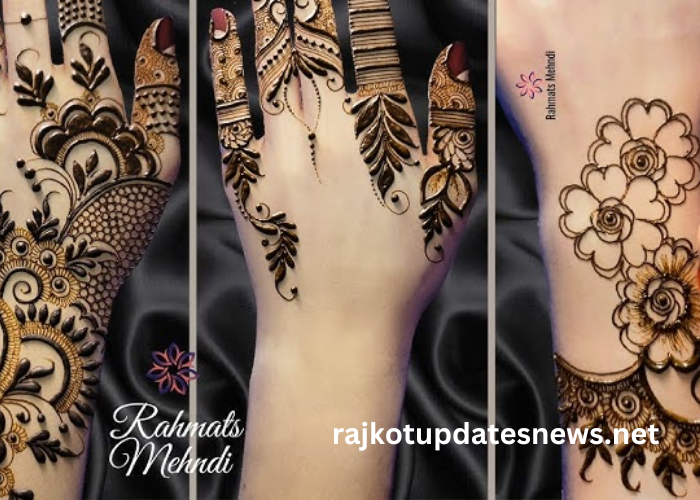Rangoli designs, a cherished tradition in many cultures, are not only a vibrant form of art but also a way to celebrate festivals and special occasions. Originating from India, Rangoli patterns are made with colorful powders, rice, and flower petals to adorn doorways and floors. Their striking visuals and cultural significance make them a delightful addition to any festive setting.
This guide delves into the world of Rangoli, offering simple yet beautiful design ideas that anyone can master. Whether you’re new to Rangoli or looking to refine your skills, you’ll find useful tips and techniques here.
Key Points
- Rangoli designs bring vibrant color and beauty to festive occasions.
- Simple techniques can create elaborate patterns effortlessly.
- Use everyday materials to craft stunning and personalized Rangoli art.
What is Rangoli?
Rangoli, also known as Kolam or Mandana in different regions, is a decorative art form where patterns are created on the ground using vibrant materials. Typically, Rangoli is designed during festivals such as Diwali, Holi, and Pongal, serving as a warm and colorful welcome to guests and deities. The designs range from basic geometric shapes to intricate floral and abstract patterns.
The Cultural Significance of Rangoli
Rangoli carries deep cultural significance in various traditions. In Hindu culture, it’s believed to attract positive energy and ward off evil spirits. For example, during Diwali, Rangoli designs are crafted at the entrance of homes to invite goddess Lakshmi, symbolizing prosperity and wealth. In South Indian traditions, Kolam designs are made daily in front of homes to bring good fortune and happiness.
Simple Rangoli Design Techniques
Creating beautiful Rangoli doesn’t require advanced skills or expensive materials. Here’s how to get started with some basic techniques:
Basic Patterns
- Geometric Shapes: Begin with simple geometric shapes like squares, circles, and triangles. These shapes are easy to draw and form the foundation of more complex designs. For instance, a simple square can be decorated with colorful borders and inner patterns to make it visually appealing.
- Flower Motifs: Flower designs, such as lotuses and marigolds, are perfect for beginners. They are not only visually pleasing but also carry symbolic meanings. A lotus design, for example, represents purity and beauty, making it a popular choice for festive Rangoli.
Tools and Materials
- Colored Powders: These are the most common materials used for Rangoli. Available in various colors, they allow for a wide range of designs. They are easy to use but can be a bit messy.
- Rice and Flour: Traditionally used in many regions, rice and flour are often used for creating Rangoli. These materials are cost-effective and readily available.
- Stencils: For those new to Rangoli, stencils can help in achieving precise and consistent patterns. They are particularly useful for intricate designs that require accuracy.
Advanced Techniques for Complex Designs
Once you’ve mastered the basics, you can explore more advanced techniques to enhance your Rangoli skills:
Using Symmetry
Symmetry plays a crucial role in many Rangoli designs. Creating symmetrical patterns, such as mandalas, involves dividing the design into equal parts that mirror each other. This technique adds balance and harmony to the overall design. For example, a mandala can be created by drawing concentric circles and filling each segment with different patterns.
Incorporating Themes
Thematic Rangoli designs can add a unique touch to your creations. You can base your Rangoli on various themes like festivals, seasons, or even personal interests. For instance, during Diwali, you might create Rangoli patterns featuring diyas (lamps) or peacocks, while during Holi, vibrant splashes of colors and abstract patterns can be used.
Comparison of Rangoli Materials
| Material | Pros | Cons |
| Colored Powders | Easy to use, vibrant colors | Can be messy and difficult to clean up |
| Rice/Flour | Traditional, cost-effective | Limited color options, can be fragile |
| Flower Petals | Natural, aromatic | Perishable, needs frequent replacement |
Tips for Perfecting Your Rangoli
- Practice Regularly: As with any art form, practice is essential. Start with simple designs and gradually attempt more complex patterns. Practicing will help you become more adept at handling materials and designing intricate patterns.
- Plan Your Design: Sketching your design on paper before transferring it to the ground can help in visualizing the final look. This allows you to make necessary adjustments and ensures that the design will turn out as planned.
Note: Make sure the surface where you are creating the Rangoli is clean and smooth. This will help in achieving a neater and more defined design.
Conclusion
Rangoli designs are a wonderful way to add a touch of creativity and festivity to any occasion. By starting with simple patterns and gradually exploring more advanced techniques, you can create stunning designs that will enhance the beauty of your space.
Remember to practice regularly and experiment with different materials and themes to discover what works best for you. Rangoli is not just an art form but a way to celebrate and express joy.
FAQ’s
- What materials are best for making Rangoli designs?
Colored powders, rice, flour, and flower petals are commonly used. Each material has its own advantages and can be chosen based on the desired effect and occasion.
- Can Rangoli be made on any surface?
Ideally, Rangoli should be made on a clean, smooth surface such as the floor or a flat outdoor area. This ensures that the design is clear and well-defined.
- How long does a Rangoli design last?
The longevity of a Rangoli design depends on the materials used. Powder designs may last a few hours to a day, while rice or flour designs might last longer, especially if protected from the elements.
- Are there specific colors that are traditionally used in Rangoli?
Bright colors like red, yellow, green, and blue are commonly used, as they symbolize joy and celebration. However, the choice of colors can vary based on personal preference and the occasion.
- Can Rangoli designs be reused?
Most Rangoli designs are created for specific occasions and are not reusable. However, you can photograph your designs and use them as inspiration for future Rangoli creations.



